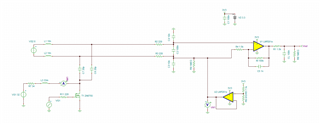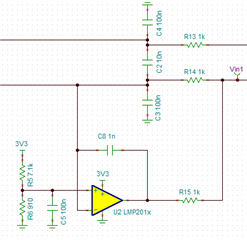Tool/software:
Shown below is a thermocouple amplifier circuit implemented using the LMP2012.
Using K type thermocouple, the circuit produces the expected response of ~2.77mV/°C. (gain of 67.67)
In the same system there are PWM controlled valves. When the valves are actuated, and the wires of the valves are routed close to the TC wires a DC offset is produced on the output of the amplifier. This varies between units but can be up to 120mV (~50C measurement error).
Removing C12 appears to dramatically reduce the effect but not totally eliminate it.
My question is what is likely cause of this susceptibility?
What can be done to mitigate this effect further?













